National symbols of Canada
National symbols of Canada are the symbols that are used in Canada and abroad to represent the country and its people. Prominently, the use of the maple leaf as a Canadian symbol dates back to the early 18th century, and is depicted on its current and previous flags, the penny, and on the coat of arms (or royal arms). Other prominent symbols include the national motto "A Mari Usque Ad Mare" (From Sea to Sea),[1] the sports of hockey and lacrosse, the beaver, Canada Goose, Canadian horse, the Royal Canadian Mounted Police, the Canadian Rockies,[2] and more recently the totem pole and Inuksuk.[3] With material items such as Canadian beer, maple syrup, tuques, canoes, nanaimo bars, butter tarts and the Quebec dish of poutine being defined as uniquely Canadian.[3][4] A 2013 Statistics Canada survey found that more than 90% of Canadians believed that the Canadian Charter of Rights and Freedoms and the national flag were the top symbols of Canadian identity. Next highest were the national anthem, the Royal Canadian Mounted Police and hockey.[5]
| Part of a series on the |
| Culture of Canada |
|---|
 |
| History |
| Topics |
| Research |
|
The Crown symbolizes the Canadian monarchy,[6] and appears on the coat of arms (used by parliamentarians and government ministries), the flag of the Governor General,[6] the coats of arms of many provinces and territories; the badges of several federal departments, the Canadian Armed Forces and Royal Military College of Canada, many regiments, and other police forces; on buildings, as well as some highway signs and licence plates. Also, the Queen's image appears in Canadian government buildings, military installations and schools; and on Canadian stamps, $20 bank notes, and all coins.
Official and de facto symbols
Canada does not have a floral emblem,[7] and the maple leaf, Royal anthem, mounted police and Great Seal are unofficial "De facto" symbols.[8]
| Symbol | Image | Notes |
|---|---|---|
| National flag[9] | .svg.png) |
Official symbol as of February 15, 1965[9] |
| Royal standard[6] | 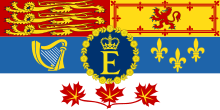 |
Royal symbol - adopted and proclaimed by Queen Elizabeth II in 1962 for her use in her capacity as Queen of Canada.[10] |
| Viceregal standard | 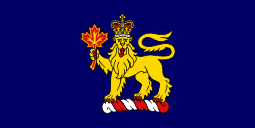 |
Royal symbol adopted 1981 - current version 2005[11] |
| Royal cypher[6] | 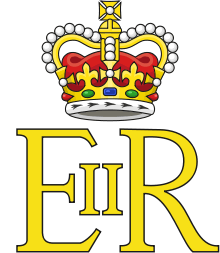 |
Royal symbol since 1952[12] |
| Royal arms[9][13] | .png) |
Official symbol as of November 21, 1921 (most recent rendition 1994, still in official use 1957 rendition displayed here)[9] |
| Great Seal[8] |  |
De facto symbol since 1867 - (current version November 14, 1955).[8] |
| National anthem[9] | 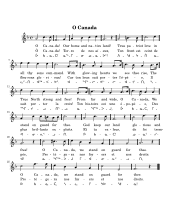 "O Canada" |
Official since July 1, 1980 (song dates to 1880)[9] |
| Royal anthem[6] | 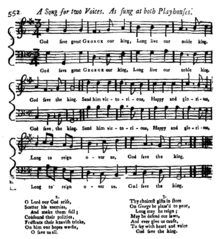 "God Save the Queen" |
De facto Royal anthem that dates to 1745[14] |
| Motto[9] | A Mari Usque Ad Mare (From sea to sea) |
Officially adopted November 21, 1921[9] |
| National colours[9] | Red White |
Official symbol as of November 21, 1921 by order of King George V[9] |
| National tree[9] | 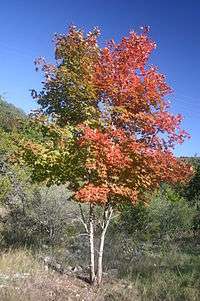 Maple |
Official symbol since 1996[9] |
| Additional national symbol[8] | _crop.jpg) Maple leaf |
De facto symbol since 1700s[8] |
| National animals[9] | 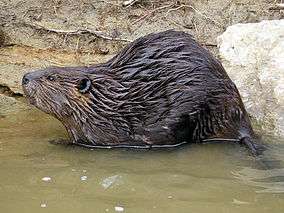 Beaver |
Official symbol since 1975[9] |
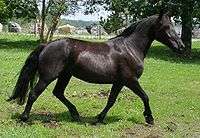 Canadian horse |
Official symbol since 2002[9] | |
| National sport[9][15] | 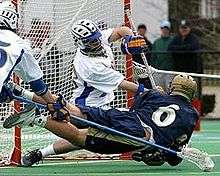 Lacrosse (summer) |
Officially adopted on May 12, 1994[9] |
 Ice hockey (winter) |
Officially adopted on May 12, 1994[9] | |
| National tartan[9] | 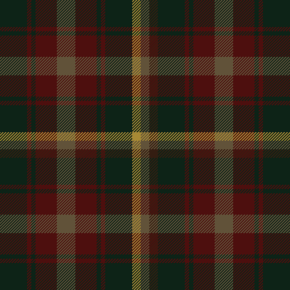 Maple Leaf Tartan |
Officially adopted on March 9, 2011[9] |
| Royal Canadian Mounted Police[9] | 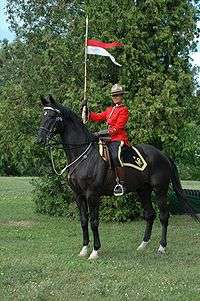 Royal Canadian Mounted Police Officer |
De facto symbol since 1920[8] |
See also
References
- Reingard M. Nischik (2008). History of Literature in Canada: English-Canadian and French-Canadian. Camden House. pp. 113–114. ISBN 978-1-57113-359-5.
- Canadian Heritage (2002). Symbols of Canada. Canadian Government Publishing. ISBN 978-0-660-18615-3.
- Sociology in Action, Canadian Edition, 2nd ed. Nelson Education-McGraw-Hill Education. p. 92. ISBN 978-0-17-672841-0.
- Hutchins, Donna; Hutchins, Nigel (2006). The Maple Leaf Forever: A Celebration of Canadian Symbols. Erin: The Boston Mills Press. p. iix intro. ISBN 978-1-55046-474-0.
- "The Daily — Canadian identity, 2013". www.statcan.gc.ca. Retrieved 2015-10-01.Canadian Identity, 2013 - By Maire Sinha
- "The Crown in Canada". Department of Canadian Heritage. Archived from the original on 2011-08-27. Retrieved 2011-07-27.
- "Floral Emblems of Canada – A Bouquet". Canadian Heritage. 21 March 2009. Archived from the original on 30 May 2013. Retrieved 2013-04-03.
- "Unofficial symbols of Canada". The Department of Canadian Heritage. Retrieved 2019-01-01.
- "Official symbols of Canada". Government of Canada. 2017.
- Heritage, Canadian (11 August 2017). "Canadian flags of the Royal Family". aem.
- General, The Office of the Secretary to the Governor. "Governor General of Canada [Civil Institution]". reg.gg.ca.
- Heritage, Canadian (11 August 2017). "Royal Crown and Cypher". aem.
- "The arms of Canada". Department of Canadian Heritage. Archived from the original on 2009-02-28. Retrieved 2011-07-27.
- Heritage, Canadian (11 August 2017). "Royal Anthem". aem.
'O Canada' and 'God Save the Queen'/'Dieu sauve la Reine' were approved by Parliament in 1967 as Canada's national and royal anthems. However, legislation to this effect was passed only in 1980, and applied only to 'O Canada.'
- "National Sports of Canada Act, CHAPTER N-16.7". Code of Canada. Government of Canada. 12 May 1994. Archived from the original on 19 April 2012.